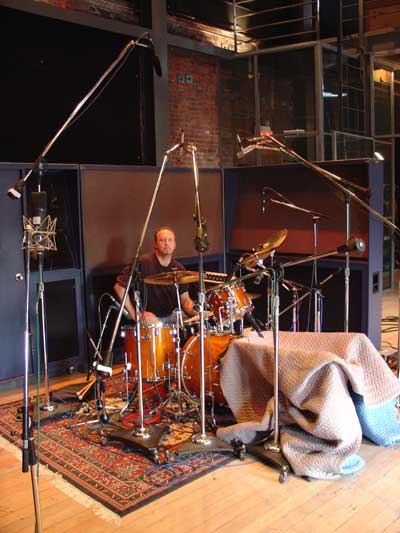Studio Drummer – Chart Reading – Practical Advantages
*HERE IS A GREAT EXAMPLE FROM MY EXPERIENCE WHY IT’S SO IMPORTANT TO BE ABLE TO WRITE YOUR OWN CHARTS.*
Previously, I mentioned having to work with long charts and in one particular situation I was confronted with exactly that on a pressure-packed live gig.
There was a book for this gig, in other words the show had a book of charts that were in plastic sleeves whereby the drummer could flip the pages and move through the voluminous individual charts, which were up to 8 to 10 pages long. The previous drummer had handled this issue by putting one stick in his mouth while turning pages which can be a common way to handle this. The problem was that the groove was suffering at the point of page turning.
Being that this gig was one that I wanted to nail I took the time to write my own charts.
The reason why the charts are often so long is that the musical pieces are constantly changing key so the writer can’t use repeat signs. However we are able to since we’re not a chordal instrument.
I was able to reduce 8 page charts down to very accurate 3 or 4 page charts that involved no page turning. Plus as you experienced folk know, a 3 to 4 page chart will be readable on a single music stand instead of 2. If a chart is just too long you can also have one stand on one side and one on the other. There were some songs on the Calgary Stampede that I decided to use the show’s charts for and they were a little more than 4 pages in length, so I used that trick.
And best of all regarding this added work and preparation, I could paste the entire performance to the wall the entire time with no physical interruptions!
check out the final installment coming!






